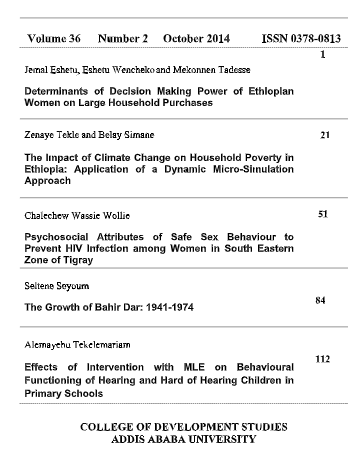The Growth of Bahir Dar: 1941.1974
Keywords:
Growth, History and Bahir DarAbstract
In the 1940s and 1950s Ethiopia embarked upon national plans of administrative and economic development. The plans envisaged the Lake Tana and Blue Nile basin as one of the major centers for economic development. Bahir Dar town a was selected to develop as a center of regional economic development in the basin. A lot has been invested to stimulate the economic development of towns such as Bahir Dar. Data were collected from published and unpublished materials as well as oral information from knowledgeable elders. A historical analysis of the data shows that the Ethiopian government took several political and economic measures that promoted the growth of Bahir Dar. Among others, it made Bahir Dar capital of the districts in the lower Tana basin with a municipally status. It also prepared a comprehensive master plan of the town that gave Bahir Dar an important industrial, health, and educational role to play in addition to its becoming an administrative and trading center. These developments were intimately linked with an economic plan of the Lake Tana-Blue Nile Basin. One major aspect of this comprehensive plan was the laying out of the basic infrastructure that connected Bahir Dar by air and motor road transport with Addis Ababa, Asmara and the Red Sea ports of Massawa and Assab towards which south-western Ethiopia would be drawn. Such developments made it definite that Bahir Dar would grow as an example of a regional economic development of the basin. This paper, therefore, explores the administrative and economic plans and the resultant growth of Bahir Dar as a locus of regional development in north-western Ethiopia.

